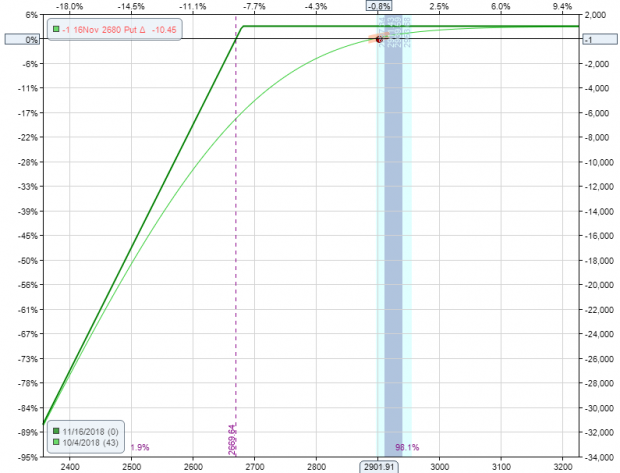Creating great options strategies is a process of trial and error. This article is about those errors.
Bad Strategy #1 — Selling Naked Options: The pinnacle of recklessness.
This graph shows that if the market goes up, the trade stands to make a little bit of money. If it goes down, the trade will lose a lot of money.

Selling naked puts OR calls (or tail-risk for you fancy folks) never ends well. Having a limited upside with unlimited risk is the antithesis of good trading.
Here is a short list of professional traders who have cumulatively lost almost $3 billion with this approach.
Optionsellers.com — Lost $150 million
LJM Fund Management — Lost $440 million
Catalyst Financial — Lost $700 million
Malachite Capital Management — Lost $1.6 billion (note: this is a recent development and the full extent of the losses are relatively unknown.)
Bad Strategy #2 — The Covered Call: Luring retirees into a bad trade since 1975.
A covered call is where an investor owns stock and sells a call against it.

Notice any similarities between this and the naked option? Once again, unlimited loss with limited upside.
Investors run this strategy as an income generator when the stock is going sideways or down. This can be profitable, but it’s a wildly inefficient use of capital. Too much risk for too little reward.
The same exposure can be created by utilizing a vertical with 90% less capital at risk.

Bad Strategy #3 — The Iron Condor: Balancing a grenade on your head while riding a bull.
An Iron condor sells deep OTM options premium with limited risk.

There are a few reasons to steer clear of this approach. First, it risks more than it stands to make. Second, the trade can incur large losses on the way to a small profit, as shown by the green curved line.
The Iron Condor was Karen the Supertrader’s bread and butter strategy until she lost more than $50 million.
Karen the Supertrader is an extreme example of the Iron Condor. It was partly due to the high intra-trade losses that lead to her extravagant and public blow up.
Bad Strategy #4 — Leveraging Long Options: The road to riches (and the poor house)
Simply said, don’t put every dollar you have into buying deep OTM options.

The green line shows buying calls. The blue line shows buying stock.
Both trades have equal amounts of money.
This strategy can make a KILLING if it goes right. You can also blow up in a blink of an eye if it doesn’t.
Avoiding all these strategies won’t make you rich, but they will keep you from becoming poor. The most important part of trading is to never blow up. Make sure that no matter what happens, you can come back and trade the next day.


A Covered call is not unlimited loss…that’s the whole reason it’s covered. By holding the underlying you can only lose as much as you purchase the underlying for.
By selling a covered call on stocks you were wanting to hold forever anyway (since you mention retirement), you are TEMPORARILY, giving up a PORTION of your upside potential, while with 100% certainty MITIGATING some of the potential downside to your underlying holding, depending on what strike you choose. The biggest risk still comes from having the risk of holding the underlying and it tanking…but you were going to hold the stock anyway weren’t you? So it’s not like you’re taking on risk than you were taking on anyway. Yes It may not be the most efficient thin you could possibly do, if you do it mechanically, but for from a money “loser” as you state. Are you trying to scare people into investing with you? As a professional businessman, please be professional and courteous in your response. Thank you.
Anecdotally, you’re likelihood of long-term success and profit potential selling low delta strangles on an index is probably at least a bit higher than trying to start a business. Something to think about.